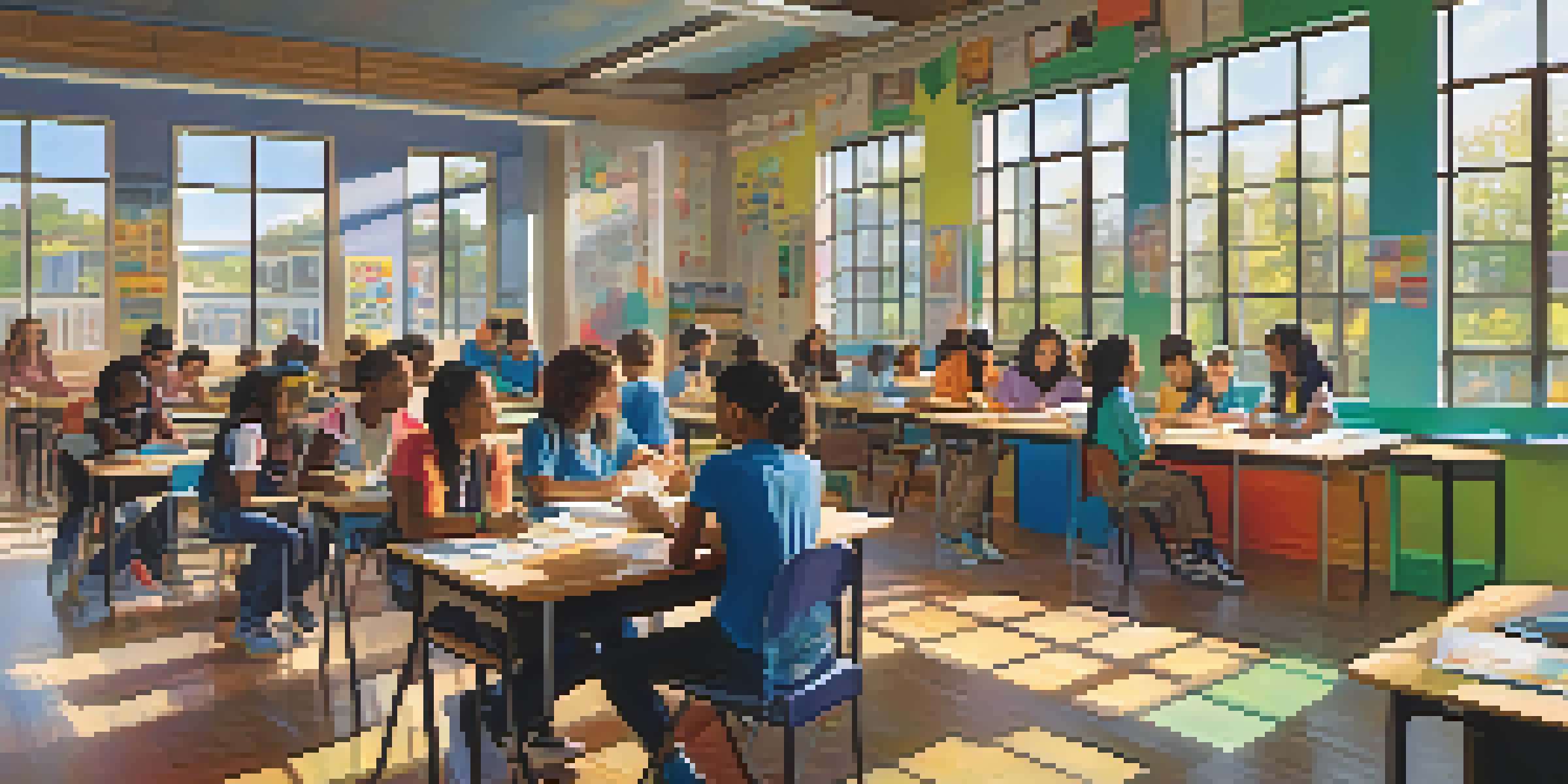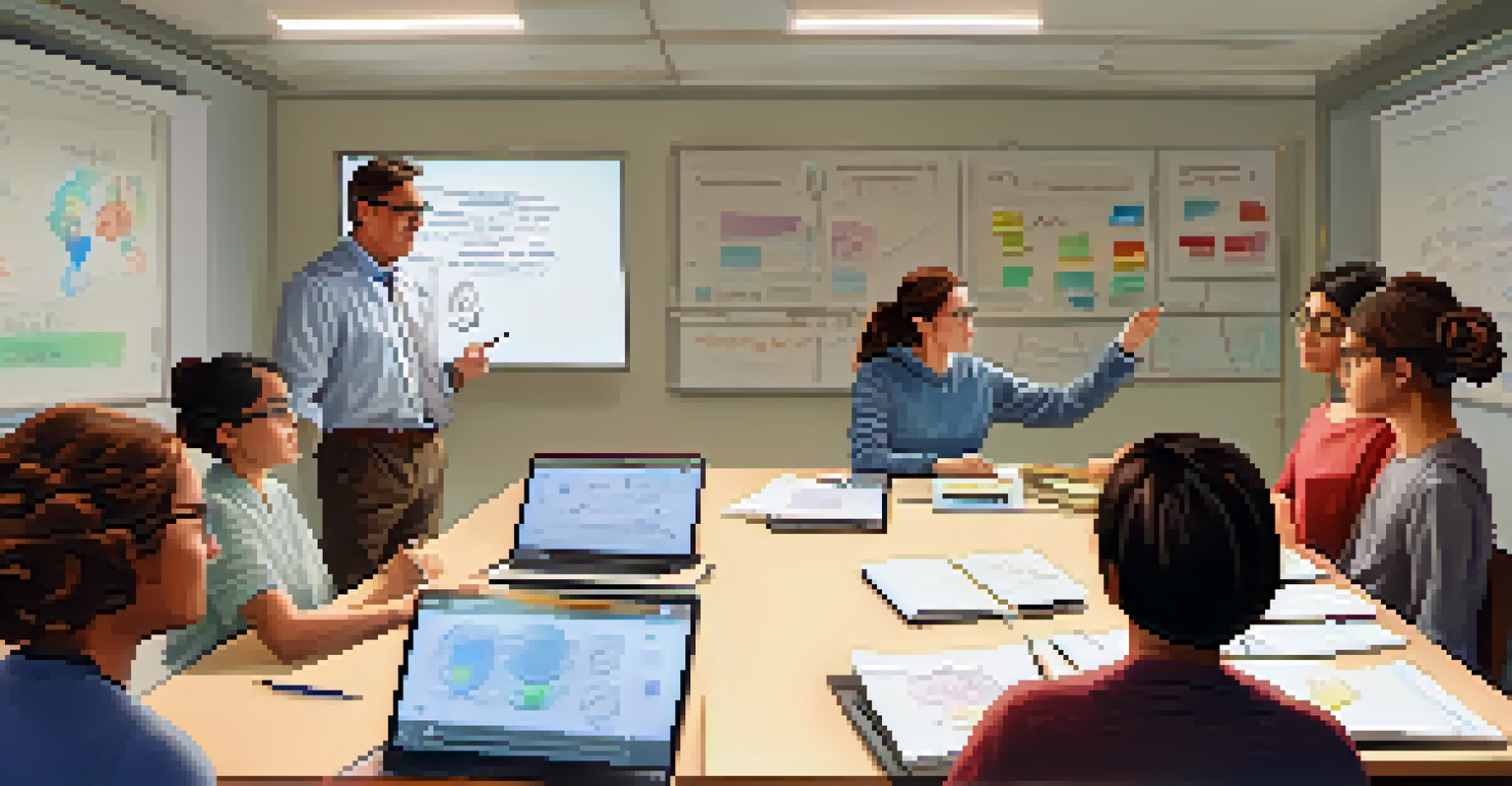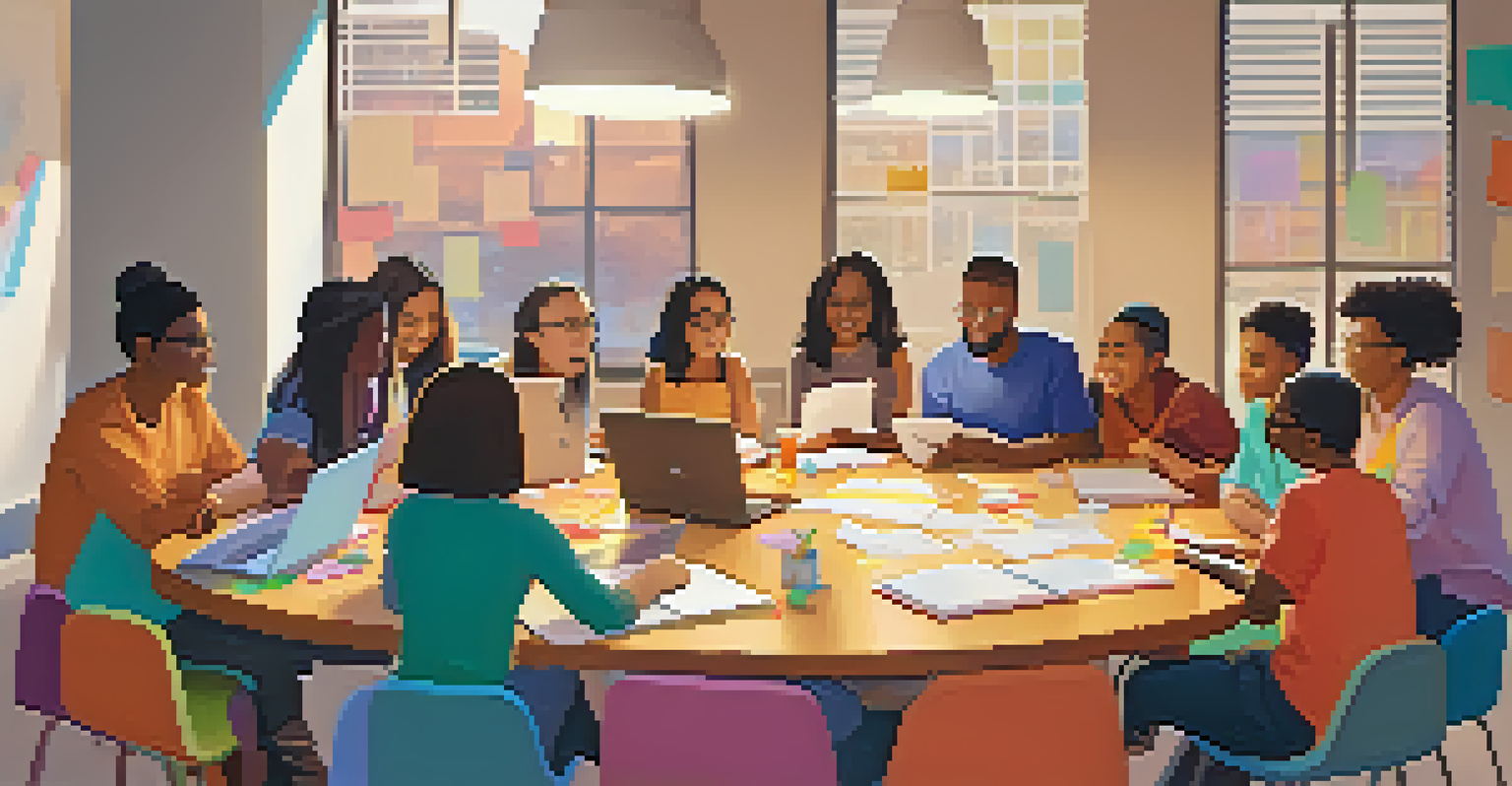Flipped Classroom: Involving Students in Lesson Planning

What is a Flipped Classroom?
A flipped classroom is an innovative teaching model that reverses traditional learning. Instead of introducing new content during class, students learn through videos or readings at home. This allows classroom time to be used for discussions, problem-solving, and hands-on activities.
The greatest sign of success for a teacher is to be able to say, 'The children are now working as if I did not exist.'
Imagine a world where students come to class already familiar with the day’s topic. This approach fosters a deeper understanding as they can engage more actively with their peers and instructors. Teachers become facilitators, guiding students as they explore concepts together.
In essence, the flipped classroom turns the usual structure on its head, creating a more dynamic learning environment. It promotes self-paced learning and encourages students to take responsibility for their education, paving the way for increased engagement.
Benefits of Involving Students in Lesson Planning
Involving students in lesson planning brings a wealth of benefits to the educational experience. When students have a say in what they learn, it boosts their motivation and investment in the material. This sense of ownership can lead to improved academic performance.

For example, if students express interest in a particular topic, teachers can tailor lessons to include that subject matter. This not only makes the learning process more relevant but also creates a connection between the curriculum and students' lives.
Flipped Classrooms Enhance Learning
The flipped classroom model promotes active engagement by allowing students to learn content at home and use class time for collaboration.
Additionally, when students participate in planning, they develop critical skills such as decision-making and collaboration. These skills are essential for success both in and out of the classroom, preparing them for real-world challenges.
How to Implement Student Involvement
Implementing student involvement in lesson planning can be as simple as starting with a brainstorming session. Teachers can ask students what topics they are interested in exploring or what questions they want answered. This collaborative approach sets the stage for a more engaging learning experience.
Education is not the filling of a pail, but the lighting of a fire.
Another effective method is to create surveys or feedback forms where students can share their preferences. This not only empowers them but also provides valuable insights for educators on what resonates with their students.
Finally, consider organizing student-led discussions or projects based on their chosen topics. This not only reinforces their learning but also allows them to take the lead, further enhancing their confidence and abilities.
Challenges of Flipped Classrooms
While flipped classrooms offer numerous advantages, they also come with challenges. One major hurdle is ensuring all students have access to the necessary technology, such as laptops or reliable internet. Without this access, the model can inadvertently widen the achievement gap.
Moreover, some students may struggle with self-directed learning, finding it difficult to stay motivated when learning independently. Teachers need to provide adequate support and guidance to help these students thrive in a flipped environment.
Student Involvement Boosts Motivation
Involving students in lesson planning increases their investment in learning, leading to improved academic performance.
Lastly, the transition to a flipped classroom can be daunting for both educators and students. It requires a shift in mindset and teaching strategies, which can take time to adjust to. However, with patience and persistence, the rewards can far outweigh the initial difficulties.
Creating a Supportive Learning Environment
A supportive learning environment is essential for the success of a flipped classroom. Creating a culture of trust and respect encourages students to share their thoughts and ideas freely. This openness fosters collaboration and deeper discussions during class time.
Incorporating team-building activities can help strengthen relationships among students. When students feel comfortable with each other, they are more likely to engage in discussions and take risks in their learning.
Additionally, providing ongoing feedback and encouragement is crucial. Constructive feedback helps students understand their progress and areas for improvement, ensuring they stay motivated and focused on their goals.
Using Technology to Facilitate Learning
Technology plays a pivotal role in the flipped classroom model. Tools like video tutorials, interactive quizzes, and online discussion boards can enhance student learning and engagement. These resources allow students to learn at their own pace, revisiting difficult concepts as needed.
Moreover, educational platforms can streamline communication between teachers and students. This ensures that students have access to the materials they need and can ask questions outside of classroom hours.
Technology Supports Flipped Learning
Utilizing technology, such as video tutorials and online tools, facilitates independent learning and enhances classroom engagement.
It's important to choose technology that aligns with your instructional goals. Focusing on user-friendly tools will help ensure that both students and teachers can navigate and utilize them effectively, enhancing the overall learning experience.
Measuring Success in a Flipped Classroom
Measuring success in a flipped classroom can be approached in various ways. One method is to track student performance through assessments that reflect their understanding of the material. This can include quizzes, projects, or presentations that showcase their learning.
Another key indicator of success is student engagement. Gathering feedback through surveys or informal discussions can help assess how invested students feel in their learning. High levels of participation and enthusiasm often signal a positive learning environment.

Finally, observing changes in student attitudes towards learning can provide insight into the effectiveness of the flipped model. If students express a greater willingness to explore topics and collaborate with peers, it’s a sign that the approach is working well.